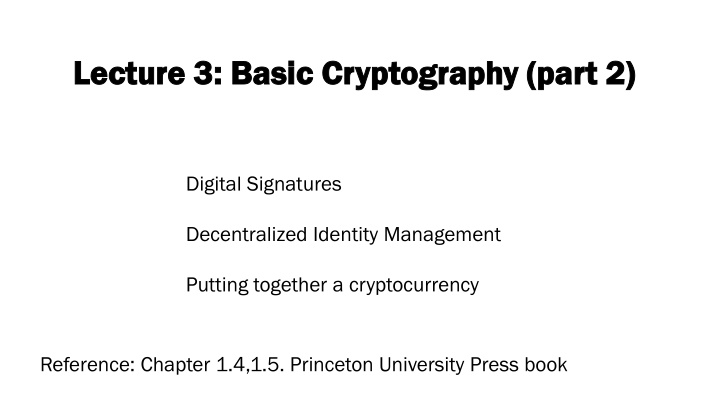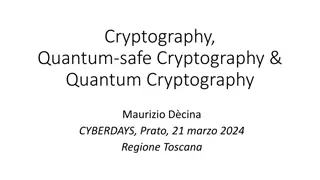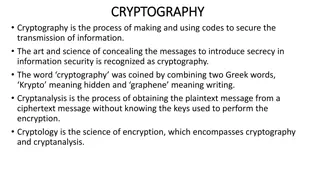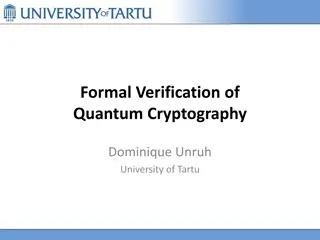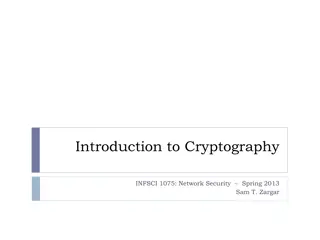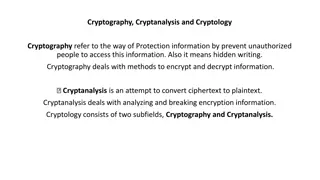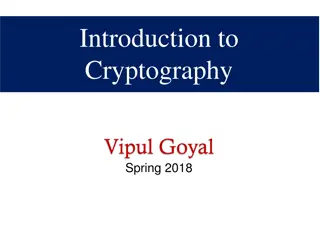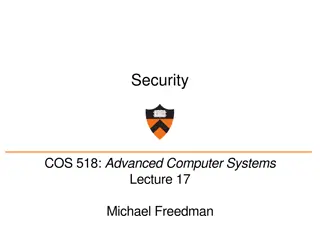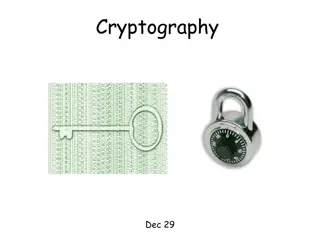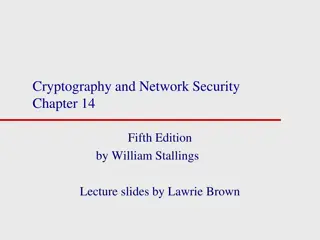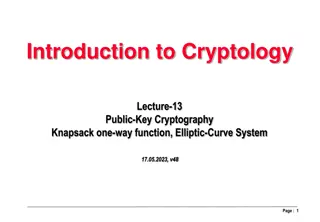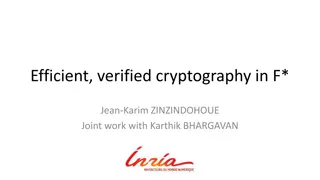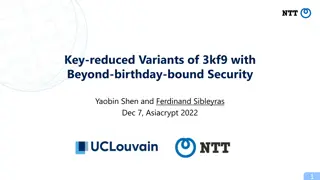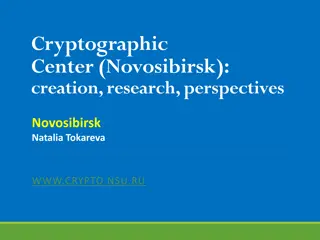Basic Cryptography Overview
This lecture delves into digital signatures, decentralized identity management, and cryptographic hash functions. Explore concepts like key generation, signature verification, and the importance of unforgeable signatures in securing transactions and identities.
Download Presentation

Please find below an Image/Link to download the presentation.
The content on the website is provided AS IS for your information and personal use only. It may not be sold, licensed, or shared on other websites without obtaining consent from the author.If you encounter any issues during the download, it is possible that the publisher has removed the file from their server.
You are allowed to download the files provided on this website for personal or commercial use, subject to the condition that they are used lawfully. All files are the property of their respective owners.
The content on the website is provided AS IS for your information and personal use only. It may not be sold, licensed, or shared on other websites without obtaining consent from the author.
E N D
Presentation Transcript
Lecture 3: Basic Cryptography (part 2) Lecture 3: Basic Cryptography (part 2) Digital Signatures Decentralized Identity Management Putting together a cryptocurrency Reference: Chapter 1.4,1.5. Princeton University Press book
Digital Signatures Digital Signatures Signature Signature Key generation Key generation Sig = sign(secretkey, message) (secretkey, publickey) = Generatekeys(keysize) Randomized function Verification Verification verify(publickey, Sig, message)
Unforgeable Signatures Unforgeable Signatures ECDSA ECDSA Unforgeable Unforgeable Elliptic Curve Digital Signature Algorithms Computationally hard to generate a verifiable signature without knowing the secret key Cryptographicaly secure against an adaptive adversary
Practice Practice Public key: Compressed: 257 bits 512 bits Secret key: 256 bits Message: Note: can sign hash of message 256 bits Signature: 512 bits
Decentralized Identity Management Decentralized Identity Management Public keys are your identity address in Bitcoin terminology Can create multiple identities (publickey, secretkey) pairs publish publickey sign using secretkey Can create oneself verifiable by others
Putting Together: Basic Cryptocurrencies Putting Together: Basic Cryptocurrencies Attempt 1: Attempt 1: Goofycoin Goofycoin Transaction: Transaction: Coin Coin: (coinID, signature of Goofy) Goofy creates coins This: This: hash pointer to coin Alice: Alice: publickey of Alice Transaction Transaction: Transfer of coin ownership Signed by owner of coin Pay this this to Alice Alice
Cryptographic Hash Functions Cryptographic Hash Functions Properties: Properties: Adversarial collision resistance One way function
Hash Pointer Hash Pointer Pointer to location of information Pointer to location of information + hash of the information + hash of the information Regular pointer Regular pointer: retrieve information Hash pointer Hash pointer: retrieve information and verify the information has not changed
Goofy Coin Goofy Coin Good news: Good news: Validity and ownership of coins Bad news Bad news: double spending
Attempt 2: Basic Cryptocurrency Attempt 2: Basic Cryptocurrency Scroogecoin Scroogecoin Transaction: Transaction: Coin Coin: (coinID, signature of Goofy) Scrooge creates coins This: This: hash pointer to coin Alice: Alice: publickey of Alice Signed by owner of coin Transaction Transaction: Transfer of coin ownership Append only Ledger Append only Ledger Pay this this to Alice Alice Blockchain Blockchain of transactions Signed by Scrooge Scrooge
Blockchain: a linked list via hash pointers Blockchain: a linked list via hash pointers Block Block: Header + Data Application Application: tamper evident information log Header: Header: Pointer to location of previous block + hash of the previous block Head of the chain being known is enough to find tamper evidence in any internal block Data Data: information specific to the block Hence the phrase: block chain blockchain block chain blockchain
Properties of Blockchain Properties of Blockchain 1. Tamper evident information log 2. Append-only data structure 3. Head of the chain being known is enough to find tamper evidence in any internal block otherwise you d have to key track of all blocks signed by Scrooge
ScroogeCoin ScroogeCoin Createcoins Createcoins Paycoins Paycoins can only be created by Scrooge multiple coins created at the same time each coin has a recipient (identified via public key) Overall block signed by Scrooge consumed coins (list) coins created (list) Total wealth consumed = total wealth created
